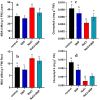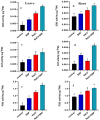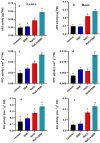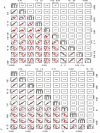Sodium nitroprusside application improves morphological and physiological attributes of soybean (Glycine max L.) under salinity stress
- PMID: 33861749
- PMCID: PMC8051766
- DOI: 10.1371/journal.pone.0248207
Sodium nitroprusside application improves morphological and physiological attributes of soybean (Glycine max L.) under salinity stress
Retraction in
-
Retraction: Sodium nitroprusside application improves morphological and physiological attributes of soybean (Glycine max L.) under salinity stress.PLoS One. 2022 Aug 3;17(8):e0272180. doi: 10.1371/journal.pone.0272180. eCollection 2022. PLoS One. 2022. PMID: 35921284 Free PMC article. No abstract available.
Abstract
Salinity is among the major abiotic stresses negatively affecting the growth and productivity of crop plants. Sodium nitroprusside (SNP) -an external nitric oxide (NO) donor- has been found effective to impart salinity tolerance to plants. Soybean (Glycine max L.) is widely cultivated around the world; however, salinity stress hampers its growth and productivity. Therefore, the current study evaluated the role of SNP in improving morphological, physiological and biochemical attributes of soybean under salinity stress. Data relating to biomass, chlorophyll and malondialdehyde (MDA) contents, activities of various antioxidant enzymes, ion content and ultrastructural analysis were collected. The SNP application ameliorated the negative effects of salinity stress to significant extent by regulating antioxidant mechanism. Root and shoot length, fresh and dry weight, chlorophyll contents, activities of various antioxidant enzymes, i.e., catalase (CAT), superoxide dismutase (SOD), peroxidase (POD) and ascorbate peroxidase (APX) were improved with SNP application under salinity stress compared to control treatment. Similarly, plants treated with SNP observed less damage to cell organelles of roots and leaves under salinity stress. The results revealed pivotal functions of SNP in salinity tolerance of soybean, including cell wall repair, sequestration of sodium ion in the vacuole and maintenance of normal chloroplasts with no swelling of thylakoids. Minor distortions of cell membrane and large number of starch grains indicates an increase in the photosynthetic activity. Therefore, SNP can be used as a regulator to improve the salinity tolerance of soybean in salt affected soils.
Conflict of interest statement
The authors have declared that no competing interests exist.
Figures





References
-
- Zhang XK, Zhou QH, Cao JH, & Yu BJ. Differential Cl−/Salt Tolerance and NaCl induced alternations of tissue and cellular ion fluxes in Glycine max, Glycine soja and their hybrid seedlings. J Agron Crop Sci. 2011; 197: 329–339.
Publication types
MeSH terms
Substances
LinkOut - more resources
Full Text Sources
Other Literature Sources
Miscellaneous

